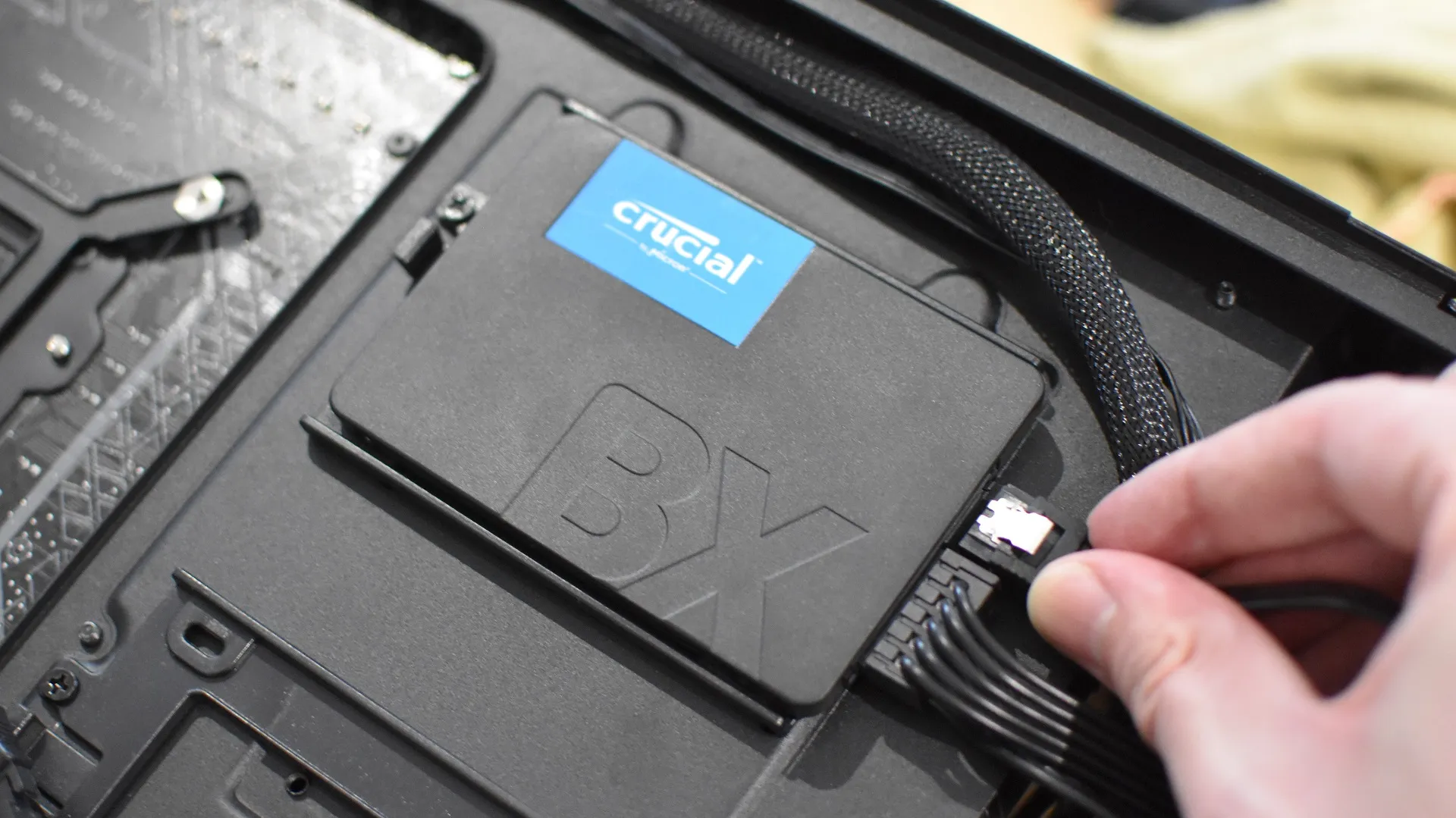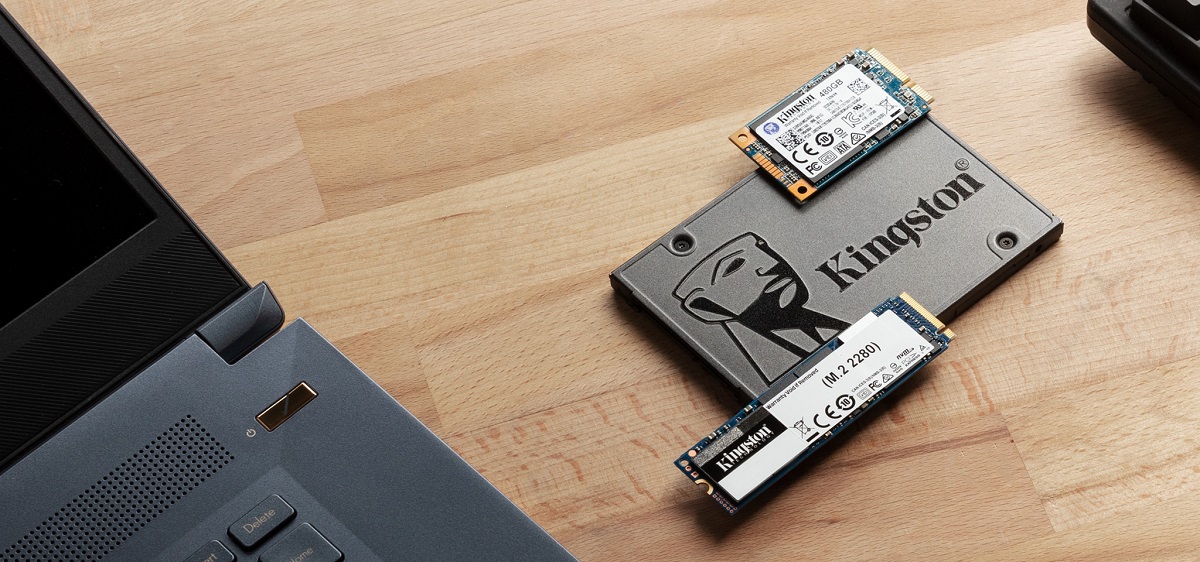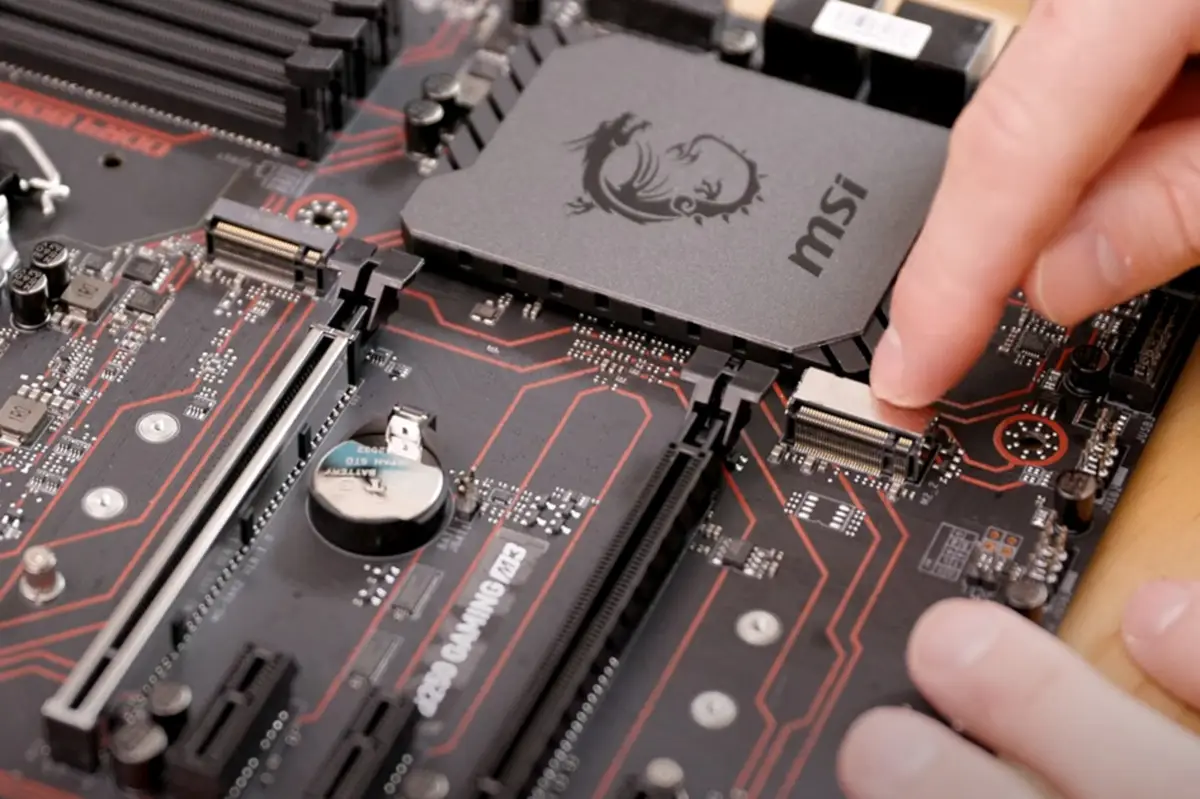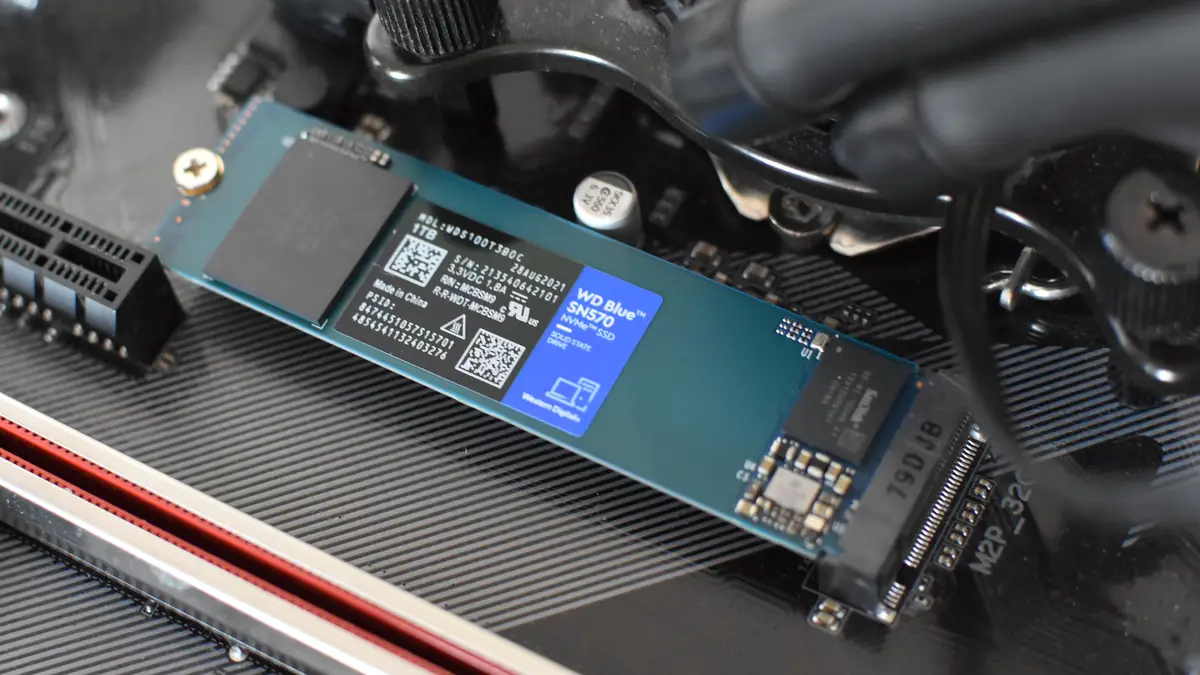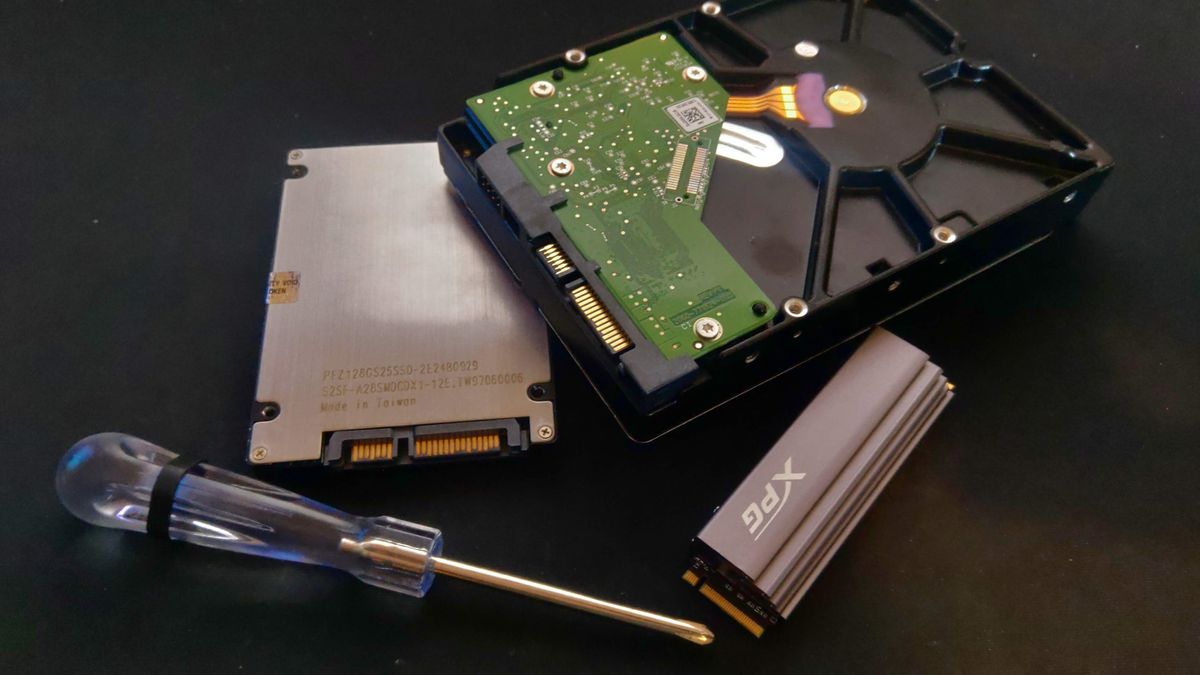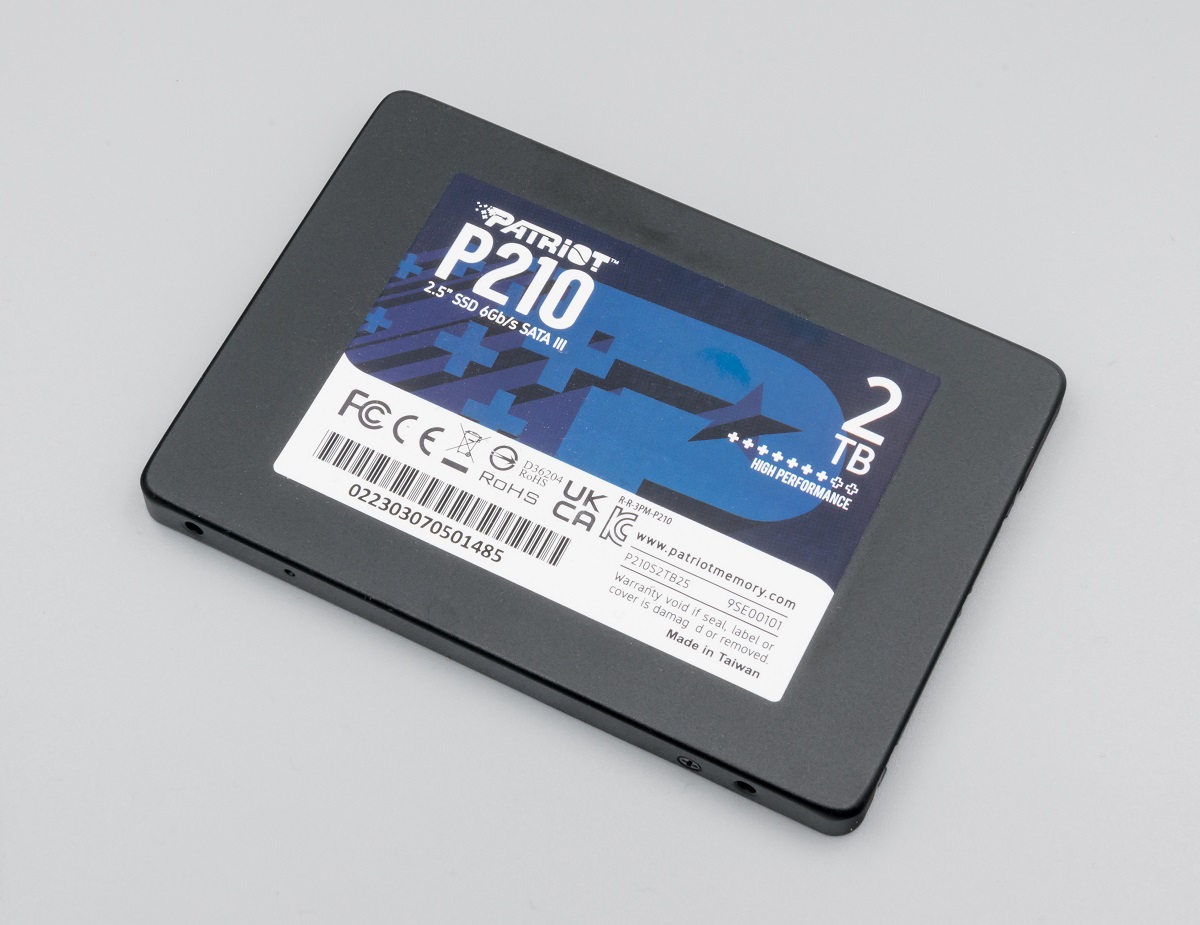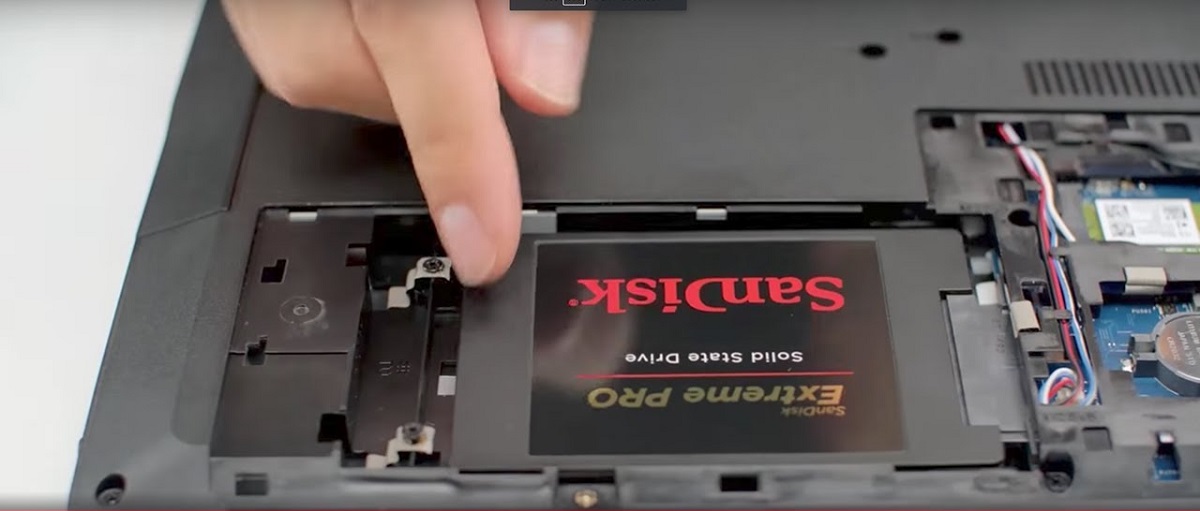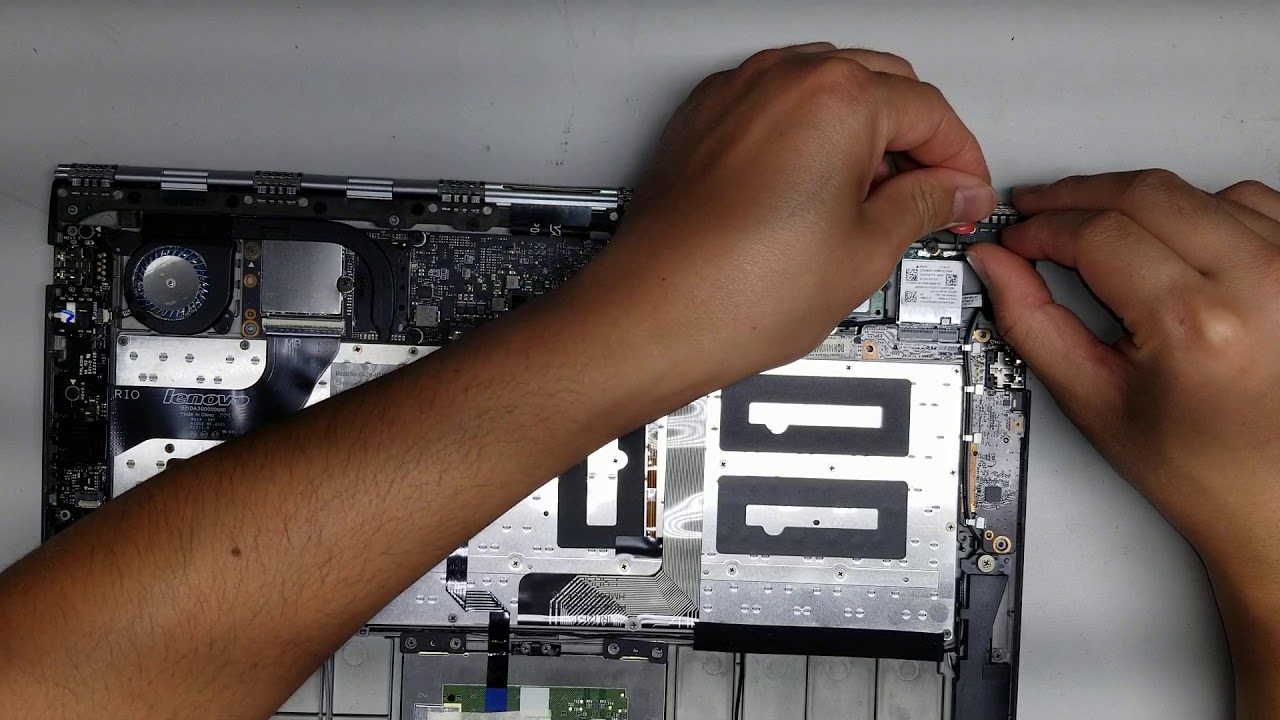Introduction
Welcome to the world of solid-state drives (SSDs) – the revolutionary storage technology that has changed the way we interact with our computers. If you’ve ever wondered what SSD stands for or how it functions, you’ve come to the right place. In this article, we will delve into the world of SSDs, exploring their inner workings, advantages over traditional hard disk drives (HDDs), different types, and how to choose and install the right one for your computer.
Over the years, SSDs have become increasingly popular, offering faster read and write speeds, improved reliability, and enhanced performance compared to traditional HDDs. This has made them a preferred choice for both casual users and professionals seeking to optimize their computer systems.
But what exactly does SSD stand for? SSD is an acronym for Solid-State Drive. Unlike traditional HDDs that use magnetic spinning disks to store and retrieve data, SSDs utilize non-volatile flash memory technology. This means that there are no moving parts inside an SSD, making them faster, quieter, and more durable.
Now that we know what SSD stands for, let’s dive into how these drives work on a technical level.
SSDs consist of an array of memory cells that store data using electrical charges. Each cell can hold multiple bits of information, allowing for a higher storage capacity within a smaller physical space. When data is written to an SSD, the electrical charges are applied to the appropriate cells, and when data is read, the charges are detected and translated into digital information.
One of the significant advantages of SSDs over HDDs is their speed. Since no physical movement is required to read or write data, SSDs can access information much faster than traditional hard drives. This translates into reduced boot times, faster file transfers, and snappier overall system responsiveness.
In the next sections, we will explore the various advantages of SSDs over HDDs, the different types of SSDs available in the market, how to choose the right one for your computer, and the steps involved in installing an SSD.
What Does SSD Stand For?
SSD stands for Solid-State Drive. It is a storage device that uses non-volatile flash memory technology to store and retrieve data. Unlike traditional hard disk drives (HDDs) which rely on spinning disks and magnetic heads, SSDs have no moving parts. Instead, they utilize integrated circuits to store data digitally.
The lack of moving parts in SSDs offers several advantages compared to HDDs. One major benefit is the speed. Since there are no physical components that need to spin up or move, SSDs can access data much faster. This leads to quicker boot times, faster application launches, and overall improved system responsiveness.
Additionally, SSDs are more durable and resistant to shock and vibration. HDDs, with their spinning disks, are more susceptible to damage from accidental drops or knocks. On the other hand, SSDs can withstand these impacts better, making them ideal for portable devices or computers that are frequently on the move.
Another advantage of SSDs is their energy efficiency. Since there are no moving parts to power, SSDs consume less energy than HDDs. This translates to longer battery life for laptops and reduced electricity costs for desktop computers. In addition, the absence of mechanical components means less heat is generated, resulting in a cooler and quieter system.
SSDs also offer better reliability and data retention. With no mechanical wear and tear, SSDs can withstand more read and write cycles before experiencing failure. Furthermore, the design of SSDs includes advanced error correction algorithms, ensuring data integrity and reducing the risk of data loss.
Overall, SSDs have revolutionized the storage industry with their speed, durability, energy efficiency, and reliability. The adoption of SSDs has become increasingly widespread, from personal computers to enterprise-level data centers. As technology continues to advance, SSDs are expected to become even faster, more affordable, and more accessible to consumers.
In the next section, we will explore how an SSD works and the underlying technology that makes it possible.
How Does an SSD Work?
Understanding how an SSD works requires a glimpse into its internal components and the technology behind it. Unlike traditional hard disk drives (HDDs), SSDs have no spinning disks or moving parts. Instead, they rely on a combination of flash memory chips, controllers, and firmware to store and retrieve data.
The primary component of an SSD is the flash memory, which comes in the form of NAND chips. These memory chips store data using electrical charges. Each memory cell within the chip can hold multiple bits of information, allowing for higher storage capacities.
When data needs to be written to an SSD, the controller manages the process. It receives the data from the computer’s processor and translates it into a format that can be stored on the flash memory chips. The controller then applies voltage to the appropriate memory cells, altering the charge to represent the data being stored. This process, called programming, writes the data into the flash memory.
When data needs to be read from an SSD, the controller performs the necessary operations. It retrieves the data from the flash memory chips by detecting the electrical charges within the cells. The controller then translates the charges back into digital information and sends it to the computer for processing.
To optimize the performance and longevity of an SSD, the controller and firmware play crucial roles. The controller is responsible for managing the flow of data, ensuring that the appropriate memory cells are programmed and read accurately. It also performs functions like wear-leveling, which evenly distributes data across the memory cells to prevent excessive wear on specific areas. The firmware, on the other hand, is the software that controls the operations and functionality of the SSD, including error correction, garbage collection, and data encryption.
One key feature of SSDs is the ability to perform random read and write operations quickly. Unlike HDDs, which need to physically seek and wait for the correct position of the spinning disk to read or write data, SSDs can access any data location in an instant. This makes SSDs ideal for applications that require fast and random access, such as operating systems, software applications, and databases.
In summary, SSDs utilize flash memory chips, controllers, and firmware to store and retrieve data. The absence of moving parts allows SSDs to offer faster access times, improved durability, and energy efficiency compared to HDDs. With technological advancements, SSDs continue to evolve, providing even faster speeds, higher capacities, and more reliable storage solutions.
Advantages of SSDs over Hard Disk Drives (HDDs)
Solid-state drives (SSDs) offer several significant advantages over traditional hard disk drives (HDDs). These advantages have contributed to the increasing popularity of SSDs in various computing environments. So, let’s dive into the advantages that make SSDs a preferred choice in today’s storage landscape.
1. Faster Performance: SSDs are known for their exceptional speed. With no moving parts, SSDs can read and write data at a significantly faster rate than HDDs. This results in faster boot times, quicker application launches, and improved system responsiveness. Whether you’re loading large files, running software, or accessing data, SSDs provide a noticeable performance boost.
2. Improved Reliability: The lack of moving parts in SSDs makes them more reliable than HDDs. Unlike HDDs, which are susceptible to mechanical failures due to shock, vibration, or wear and tear, SSDs are more durable. This makes them ideal for portable devices or computers that undergo frequent movement or rough handling.
3. Enhanced Durability: SSDs are not only reliable but also more resistant to physical damage. Without spinning disks, SSDs are less likely to succumb to failures caused by physical trauma. Consequently, data stored on SSDs is better protected, reducing the risk of data loss due to accidents or drops.
4. Energy Efficiency: SSDs consume less power than HDDs. The lack of mechanical components eliminates the need for power-hungry motors to spin disks, resulting in lower energy consumption. In laptops and other battery-powered devices, this translates to longer battery life. Also, reduced power requirements lead to lower electricity bills for desktop computers.
5. Quiet Operation: With no moving disks or mechanical components, SSDs operate silently. HDDs, on the other hand, produce noise as the disks spin and the heads move. The quiet operation of SSDs ensures a more pleasant and peaceful computing experience, particularly in noise-sensitive environments like offices and libraries.
6. Compact Form Factor: SSDs are available in smaller form factors compared to their HDD counterparts. This compactness allows for greater flexibility in designing devices with limited space, such as ultra-thin laptops, tablets, and small form factor desktops. Smaller form factor SSDs, like M.2 and NVMe drives, also offer increased storage capacity and faster speeds.
7. Reduced Heat Generation: Since SSDs have no moving parts, they generate less heat during operation compared to HDDs. This not only helps in maintaining a cooler system but also reduces the need for additional cooling mechanisms. A cooler system can extend the lifespan of other components and improve overall system stability.
8. Faster File Transfer: With their high read and write speeds, SSDs excel at transferring large files and handling data-intensive tasks. Whether you’re copying files, editing videos, or running resource-intensive applications, SSDs can handle the workload with ease, further improving productivity and efficiency.
These advantages of SSDs over HDDs make them a compelling choice for both personal and professional use. The improved performance, reliability, durability, energy efficiency, and compactness of SSDs have transformed the way we interact with storage, leading to a shift towards SSD adoption across various industries.
Types of SSDs
As solid-state drives (SSDs) have evolved, several different types of SSDs have emerged to cater to various computing needs. Each type offers unique features and characteristics that make them suitable for specific applications. Let’s explore some of the common types of SSDs available in the market today.
1. SATA SSDs: SATA (Serial ATA) SSDs are the most widely used type of SSDs. They connect to the computer using the SATA interface, which is commonly found in both desktops and laptops. SATA SSDs are available in various form factors, including the traditional 2.5-inch size and the smaller M.2 form factor. While SATA SSDs offer significant performance improvements over traditional hard drives, their speeds are limited compared to other types of SSDs.
2. PCIe/NVMe SSDs: PCIe (Peripheral Component Interconnect Express) or NVMe (Non-Volatile Memory Express) SSDs are the fastest and highest-performing SSDs available. They use the PCIe interface instead of SATA, allowing for much faster data transfer speeds. NVMe SSDs are commonly found in M.2 form factor and are ideal for demanding applications that require lightning-fast read and write speeds, such as gaming, video editing, and professional workstations.
3. M.2 SSDs: M.2 SSDs are small and compact storage devices that connect directly to the motherboard. They come in various lengths and widths, with different key types to ensure compatibility with specific motherboards. M.2 SSDs can utilize both SATA and NVMe protocols, making it crucial to check the specifications before purchasing. These SSDs are commonly used in ultrabooks, compact desktops, and high-performance laptops.
4. U.2 SSDs: U.2 SSDs, also known as SFF-8639 or 2.5-inch NVMe SSDs, are designed to provide faster speeds and higher capacities than traditional SATA SSDs. U.2 SSDs offer the advantage of being hot-swappable, meaning they can be inserted or removed while the system is running. This makes them convenient for enterprise-level applications that require the flexibility of hot-plug capability.
5. External SSDs: External SSDs are portable and convenient storage solutions that connect to computers using various interfaces such as USB or Thunderbolt. These SSDs offer high-speed data transfer, making them ideal for backing up data, transferring files between devices, or running applications directly from the external drive. External SSDs are available in different form factors, including portable drives and SSDs built into external enclosures.
6. Hybrid SSDs: Hybrid SSDs, also known as SSHDs (Solid-State Hybrid Drives), combine the features of both SSDs and traditional HDDs. These drives consist of a small amount of flash memory (usually 8GB or 16GB) for caching frequently accessed data, combined with a larger traditional HDD for bulk storage. Hybrid SSDs aim to provide a balance between speed and capacity, offering faster access to commonly used files while still providing ample storage space.
When considering the type of SSD to purchase, it’s essential to assess your specific needs, including performance requirements, available interface support, form factor compatibility, and budget constraints. Each type of SSD has its advantages and limitations, so it’s crucial to choose wisely based on your intended usage and system requirements.
Choosing the Right SSD for Your Computer
When it comes to choosing an SSD for your computer, several factors need to be considered to ensure you get the best performance and compatibility. With numerous options available in terms of form factors, interfaces, capacities, and price points, it’s important to make an informed decision. Here are some key factors to consider when selecting the right SSD for your computer.
1. Interface: The interface of the SSD determines how it connects to your computer’s motherboard. The most common interfaces are SATA and PCIe/NVMe. SATA SSDs are suitable for most general computing needs, while PCIe/NVMe SSDs offer faster speeds and are ideal for high-performance systems. Ensure that your motherboard supports the chosen interface before making a purchase.
2. Form Factor: SSDs come in various form factors, such as 2.5-inch, M.2, and U.2. The form factor determines the physical size and shape of the SSD. Consider the available space in your computer case and the compatibility of the form factor with your motherboard before selecting an SSD.
3. Capacity: Determine how much storage capacity you require based on your usage. SSDs are available in a range of capacities, from 128GB to several terabytes. Consider your needs, including the size of your operating system, applications, and files, to determine the appropriate storage capacity for your SSD.
4. Speed: Take into account the read and write speeds of the SSD, especially if you need faster performance for tasks such as gaming or video editing. PCIe/NVMe SSDs generally offer faster speeds than SATA SSDs, but keep in mind that real-world performance can vary depending on other factors such as the specific model and chipset support.
5. Endurance: SSDs have a limited number of program/erase (P/E) cycles before they may start to degrade. Check the SSD’s endurance rating, usually indicated by Terabytes Written (TBW), to ensure it aligns with your usage requirements. Higher-endurance SSDs are recommended for intensive workloads or applications that involve frequent write operations.
6. Budget: Consider your budget when selecting an SSD. The price of SSDs varies depending on factors such as capacity, speed, and brand. Determine how much you are willing to spend and compare prices among different SSD models to find the best combination of features and affordability.
7. Brand and Warranty: Selecting a reliable brand with a good reputation for SSDs is important. Well-established brands often provide better quality assurance, reliability, and customer support. Additionally, check the warranty duration offered by the manufacturer to ensure you have adequate protection for your investment.
By considering these factors, you can choose an SSD that meets your specific requirements and provides optimal performance for your computer. Remember to do thorough research, read reviews, and compare specifications before making a final decision.
Installing an SSD in Your Computer
Upgrading your computer with a solid-state drive (SSD) can significantly improve its speed and overall performance. Installing an SSD is a straightforward process, but it is important to follow the necessary steps to ensure a smooth and successful installation. Here’s a guide on how to install an SSD in your computer:
1. Backup Your Data: Before beginning the installation process, it is crucial to back up all your important data. This ensures that no data is lost during the SSD installation process.
2. Choose the Right SSD: Select an SSD that is compatible with your computer’s interface (such as SATA or PCIe/NVMe) and form factor (such as 2.5-inch or M.2). Consider the capacity and speed requirements as well.
3. Prepare Necessary Tools: You will need a screwdriver, depending on the type of SSD installation. For example, if the SSD is a 2.5-inch drive, you may need a screwdriver to attach it to the mounting bracket or drive bay.
4. Shut Down Your Computer: Ensure that your computer is completely powered off before you begin the installation process. Unplug the power cable and any other peripheral devices connected to the computer.
5. Open Your Computer Case: Remove the side panel of your computer case to access the internal components. Refer to your computer’s manual for specific instructions on opening the case.
6. Locate the Available Drive Bay: Identify an available drive bay or slot where you can install the SSD. This may vary depending on your computer’s form factor and layout.
7. Connect the SSD to the Motherboard: If you are installing a 2.5-inch SSD, connect the SATA data cable to the SSD and the unused SATA port on the motherboard. Then, connect the SATA power cable from the power supply to the SSD. If you are installing an M.2 SSD, insert it into the corresponding M.2 slot on the motherboard.
8. Mount the SSD: If you are installing a 2.5-inch SSD, use screws or a mounting bracket to secure the SSD in the drive bay. Make sure the SSD is firmly and securely attached.
9. Close the Computer Case: Once the SSD is properly installed, replace the computer case side panel and secure it with screws or latches. Ensure that the case is closed securely to prevent any damage to the internal components.
10. Power On Your Computer: Reconnect all the cables and peripherals, including the power cable. Power on your computer and enter the BIOS settings to verify that the SSD is detected. If necessary, configure the boot order to prioritize the SSD as the primary boot device.
11. Install Operating System and Data: If the SSD is new and empty, you will need to install the operating system on the SSD. You can do this by using a bootable USB or DVD with the operating system installation files. Follow the on-screen instructions to install the OS. After the installation, you can transfer your backed-up data to the SSD.
By following these steps, you can successfully install an SSD in your computer and enjoy the improved speed and performance it offers. Remember to consult your computer’s manual or seek professional assistance if needed.
SSD Maintenance and Care
Maintaining and caring for your solid-state drive (SSD) is essential to ensure its longevity, optimize performance, and prevent data loss. While SSDs are generally more durable and reliable than traditional hard disk drives (HDDs), it’s still important to follow some basic maintenance practices. Here are some tips for maintaining and caring for your SSD:
1. Keep Your SSD Firmware Up-to-Date: Manufacturers often release firmware updates for SSDs to improve performance, stability, and compatibility. Check the manufacturer’s website regularly for firmware updates and install them as recommended.
2. Enable TRIM: TRIM is a feature that helps the SSD maintain optimal performance over time by managing the unused blocks of data. Ensure that TRIM is enabled on your operating system to allow for efficient garbage collection and prevent performance degradation.
3. Avoid Excessive Writes: Although modern SSDs have improved endurance, it is still advisable to minimize unnecessary writes. Excessive writes can shorten the lifespan of the SSD. Avoid downloading unnecessary files, reducing excessive defragmentation, and avoiding constant write-intensive operations if possible.
4. Prevent Overheating: Overheating can negatively impact the performance and lifespan of an SSD. Ensure that your computer’s cooling system is functioning properly, and keep your computer in a well-ventilated area. Consider adding additional cooling if necessary.
5. Avoid Power Interruptions: Abrupt power loss or power surges can corrupt data on an SSD. Use a reliable uninterruptible power supply (UPS) to protect your computer against sudden power outages. This will help ensure that data is safely written to the SSD before shutting down.
6. Regularly Check for Errors: Monitor your SSD for any signs of errors or issues. Most operating systems have built-in diagnostic tools that can scan and check the health of your SSD. Regularly perform these checks and address any detected errors promptly.
7. Backup Data Regularly: While SSDs are generally reliable, it is crucial to have regular backups of your important data. Use an external storage device or cloud backup service to create copies of your critical files. This will protect your data in case of accidental deletion, hardware failure, or other unforeseen events.
8. Securely Erase Data: When disposing of or selling your SSD, securely erasing the data is important to protect your privacy and prevent data leakage. Use a secure data erasure tool to ensure that all data on the SSD is securely wiped and cannot be recovered.
By following these maintenance practices, you can prolong the lifespan of your SSD and ensure it continues to perform optimally. While SSDs are generally more resilient than HDDs, proper care and maintenance will help you make the most out of your investment in SSD technology.
Conclusion
Solid-state drives (SSDs) have revolutionized the storage industry, offering a range of advantages over traditional hard disk drives (HDDs). With their faster performance, improved reliability, enhanced durability, energy efficiency, and compact form factors, SSDs have become a preferred choice for computer users seeking optimal storage solutions.
Throughout this article, we explored the meaning of SSD, how SSDs work, advantages over HDDs, different types of SSDs, and tips for choosing, installing, and maintaining an SSD. By understanding these aspects, you can make informed decisions when it comes to upgrading your computer’s storage.
SSDs provide significant performance benefits, offering faster boot times, quicker application launches, and improved system responsiveness. With no moving parts, SSDs are more reliable and durable than HDDs, making them suitable for portable devices and systems that undergo frequent movement or rough handling.
Additionally, SSDs are energy efficient, generating less heat and consuming less power, which both extends battery life for laptops and reduces electricity costs for desktop computers. Their compact form factors allow for greater flexibility in designing devices with limited space, while their faster read and write speeds make them ideal for tasks that require quick access to data.
When choosing an SSD, consider the interface, form factor, capacity, speed, durability, and your budget. Install the SSD in your computer by following the necessary steps, ensuring proper connections and mounting. Maintain and care for your SSD by keeping the firmware up-to-date, enabling TRIM, avoiding excessive writes, preventing overheating, and regularly checking for errors.
In conclusion, SSDs have revolutionized the storage landscape, offering faster, more reliable, and more efficient storage solutions compared to traditional HDDs. The continuous advancements in SSD technology have made them a crucial component for enhancing computer performance and user experience. By utilizing the benefits of SSDs and taking appropriate care, you can unlock the full potential of your computer and enjoy the benefits of fast and reliable storage for years to come.







